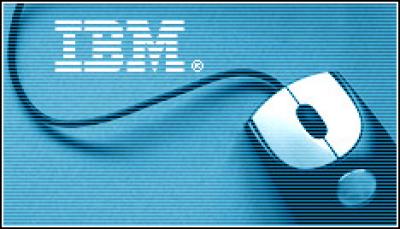Continued from page 1
Where it all began
Of course, IBM wouldn’t be where it is today without another Watson: Thomas J. Watson Sr. (pictured), who joined C-T-R as general manager in 1914 and later became IBM’s first — and arguably most impactful — chairman. Watson shaped the company and established a culture and core set of values that continue to stamp IBM today.
In the new book on IBM’s 100 years in business, Making the World Better, by Kevin Many, Steve Hamm and Jeffrey M. O’Brien, Hamm wrote: “Since its early days, IBM has been operated based on a set of core beliefs. IBM would distinguish itself with its respect for the individual, its pursuit of excellence in all things and its commitment to providing the best customer service.
“These values were baked into the core DNA by Thomas Watson Sr., who built the near-failing organisation of 1914 into an industrial giant with staying power. And that DNA has taken hold in millions of employees over the course of 100 years.”
 Watson Sr. (pictured) also adopted a one-word mantra: THINK, which — written in block letters — appeared in IBM facilities around the world. That mantra encouraged IBMers not only to think, but to think big. And, led by Watson Sr. and later by his son, Thomas Watson Jr., IBM launched a culture of thinking big and making big bets.
Watson Sr. (pictured) also adopted a one-word mantra: THINK, which — written in block letters — appeared in IBM facilities around the world. That mantra encouraged IBMers not only to think, but to think big. And, led by Watson Sr. and later by his son, Thomas Watson Jr., IBM launched a culture of thinking big and making big bets.
One of Watson’s first big bets was to remain aggressive during the Great Depression and to keep up the company’s pace of building its tabulating machines. The bet paid off when, coming out of the depression, President Franklin D. Roosevelt signed the Social Security Act, and businesses began buying IBM machines to handle the information processing requirements of Social Security.
As these bets paid off on an ongoing basis, “The company has continued to remake itself over time,” Mills said. “The strategy is to keep shifting and adapting.” He added that over the last few decades, IBM has transformed itself from a hardware business to one that’s more focused on software and services.
A Near-Death Experience
In the mid-1980s to early 1990s, a combination of complacency, weariness from battling antitrust claims and missing the boat on client/server, among other things, caused IBM to lose focus, market share and revenue. Marie Wieck, the company’s general manager of application integration middleware and WebSphere, said IBM’s focus on the mainframe at the expense of being late to the client/server game hurt.
“IBM misread the client/server architecture,” added Amy Wohl, an industry analyst who has followed IBM for many years. “While Compaq was selling a server or two into mid-market and large companies and then coming back to sell some more, IBM missed this [market] until the 1990s, missing an important business opportunity.”
The company eventually ousted then-CEO John F. Akers and brought in Louis V. Gerstner Jr., a former McKinsey consultant and CEO of RJR Nabisco. Gerstner quickly slashed headcount and spending, and reset the company’s focus on the customer.
Samuel J. Palmisano, IBM’s current chairman and CEO, followed Gerstner, and quickly established three new values for the modern IBM company: “dedication to every client’s success; innovation that matters — for our company and for the world; and trust and personal responsibility in all relationships.”
Continued on page 3




